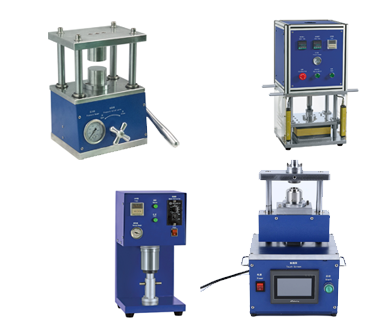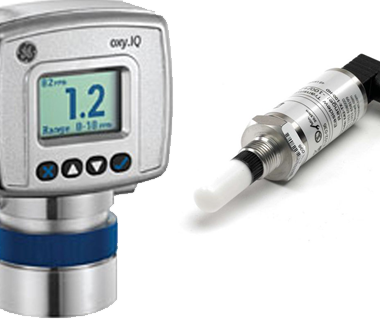No products in the cart.
Biological Safety Manual – Chapter 01: Introduction
Title
Biological Safety Manual – Chapter 01: Introduction
Introduction
Over the past two decades, Biosafety in Microbiological and Biomedical Laboratories (BMBL) has become the code of practice for biosafety—the discipline addressing the safe handling and containment of infectious microorganisms and hazardous biological materials. The principles of biosafety introduced in 1984 in the first edition of BMBL1 and carried through in this fifth edition remain steadfast. These principles are containment and risk assessment. The fundamentals of containment include the microbiological practices, safety equipment, and facility safeguards that protect laboratory workers, the environment, and the public from exposure to infectious microorganisms that are handled and stored in the laboratory. Risk assessment is the process that enables the appropriate selection of microbiological practices, safety equipment, and facility safeguards that can prevent laboratory-associated infections (LAI). The purpose of periodic updates of BMBL is to refine guidance based on new knowledge and experiences and to address contemporary issues that present new risks that confront laboratory workers and the public health. In this way the code of practice will continue to serve the microbiological and biomedical community as a relevant and valuable authoritative reference.
We are living in an era of uncertainty and change. New infectious agents and diseases have emerged. Work with infectious agents in public and private research, public health, clinical and diagnostic laboratories, and in animal care facilities has expanded. Recent world events have demonstrated new threats of bioterrorism. For these reasons organizations and laboratory directors are compelled to evaluate and ensure the effectiveness of their biosafety programs, the proficiency of their workers, as well as the capability of equipment, facilities, and management practices to provide containment and security of microbiological agents. Similarly, individual workers who handle pathogenic microorganisms must understand the containment conditions under which infectious agents can be safely manipulated and secured. Application of this knowledge and the use of appropriate techniques and equipment will enable the microbiological and biomedical community to prevent personal, laboratory and environmental exposure to potentially infectious agents or biohazards.
Table of Contents
- The Occurrence of Laboratory-Associated Infections
- Evolution of National Biosafety Guidelines
- Risk Criteria for Establishing Ascending Levels of Containment
- Agent Summary Statements
- Biosecurity
- Using BMBL
- Looking Ahead
- References
The Occurrence of Laboratory-Associated Infections
Published reports of LAIs first appeared around the start of the twentieth century. By 1978, four studies by Pike and Sulkin collectively identified 4,079 LAIs resulting in 168 deaths occurring between 1930 and 1978.2-5 These studies found that the ten most common causative agents of overt infections among workers were Brucella sp., Coxiella burnetii, hepatitis B virus (HBV), Salmonella typhi, Francisella tularensis, Mycobacterium tuberculosis, Blastomyces dermatitidis, Venezuelan equine encephalitis virus, Chlamydia psittaci, and Coccidioides immitis. The authors acknowledged that the 4,079 cases did not represent all LAIs that occurred during this period since many laboratories chose not to report overt cases or conduct surveillance programs to identify sub-clinical or asymptomatic infections.
In addition, reports of LAIs seldom provided data sufficient to determine incidence rates, complicating quantitative assessments of risk. Similarly, there were no distinguishable accidents or exposure events identified in more than 80% of the LAIs reported before 1978. Studies did show that in many cases the infected person worked with a microbiological agent or was in the vicinity of another person was handling an agent.2-6
During the 20 years following the Pike and Sulkin publications, a worldwide literature search by Harding and Byers revealed 1,267 overt infections with 22 deaths. 7 Five deaths were of fetuses aborted as the consequence of a maternal LAI. Mycobacterium tuberculosis, Coxiella burnetii, hantavirus, arborviruses, HBV, Brucella sp., Salmonella sp., Shigella sp., hepatitis C virus, and Cryptosporidium sp. accounted for 1,074 of the 1,267 infections. The authors also identified an additional 663 cases that presented as sub-clinical infections. Like Pike and Sulkin, Harding and Byers reported that only a small number of the LAI involved a specific incident. The non-specific associations reported most often by these authors were working with a microbiological agent, being in or around the laboratory, or being around infected animals.
The findings of Harding and Byers indicated that clinical (diagnostic) and research laboratories accounted for 45% and 51%, respectively, of the total LAIs reported. This is a marked difference from the LAIs reported by Pike and Sulkin prior to 1979, which indicated that clinical and research laboratories accounted for 17% and 59%, respectively. The relative increase of LAIs in clinical laboratories may be due in part to improved employee health surveillance programs that are able to detect sub-clinical infections, or to the use of inadequate containment procedures during the early stages of culture identification.
Comparison of the more recent LAIs reported by Harding and Byers with those reported by Pike and Sulkin suggests that the number is decreasing. Harding and Byers note that improvements in containment equipment, engineering controls, and greater emphasis on safety training may be contributing factors to the apparent reduction in LAIs over two decades. However, due to the lack of information on the actual numbers of infections and the population at risk, it is difficult to determine the true incidence of LAIs with any degree of certainty.
Publication of the occurrence of LAIs provides an invaluable resource for the microbiological and biomedical community. For example, one report of occupational exposures associated with Brucella melitensis, an organism capable of transmission by the aerosol route, described how a staff member in a clinical microbiology laboratory accidentally sub-cultured B. melitensis on the open bench.8 This error and breech in containment practices resulted in eight LAIs with B. melitensis among 26 laboratory members, an attack rate of 31%. Reports of LAIs can serve as lessons in the importance of maintaining safe conditions in biological research.
Evolution of National Biosafety Guidelines
National biosafety guidelines evolved from the efforts of the microbiological and biomedical community to promote the use of safe microbiological practices, safety equipment and facility safeguards that will reduce LAIs and protect the public health and environment. The historical accounts of LAIs raised awareness about the hazards of infectious microorganisms and the health risks to laboratory workers who handle them. Many published accounts suggested practices and methods that might prevent LAIs.9 Arnold G. Wedum was the Director of Industrial Health and Safety at the United States Army Biological Research Laboratories, Fort Detrick from 1944 to 1969. His pioneering in biosafety provided the foundation for evaluating the risks of handling infectious microorganisms and for recognizing biological hazards and developing practices, equipment, and facility safeguards for their control. Fort Detrick also advanced the field by aiding the development of biosafety programs at the United States Department of Agriculture (USDA), National Animal Research Center and the United States Department of Health and Human Services (DHHS), Centers for Disease Control and Prevention (CDC) and National Institutes of Health (NIH). These governmental organizations subsequently developed several national biosafety guidelines that preceded the first edition of BMBL.
In 1974, the CDC published Classification of Etiologic Agents on the Basis of Hazard.10 This report introduced the concept for establishing ascending levels of containment that correspond to risks associated with handling infectious microorganisms that present similar hazardous characteristics. Human pathogens were grouped into four classes according to mode of transmission and the severity of disease they caused. A fifth class included non-indigenous animal pathogens whose entry into the United States was restricted by USDA policy.
The NIH published National Cancer Institute Safety Standards for Research Involving Oncogenic Viruses in 1974.11 These guidelines established three levels of containment based on an assessment of the hypothetical risk of cancer in humans from exposure to animal oncogenic viruses or a suspected human oncogenic virus isolate from man.12,13 In 1976 NIH first published the NIH Guidelines for Research Involving Recombinant DNA Molecules (NIH Guidelines).14 The NIH Guidelines described in detail the microbiological practices, equipment, and facility safeguards that correspond to four ascending levels of physical containment and established criteria for assigning experiments to a containment level based on an assessment of potential hazards of this emerging technology. The evolution of these guidelines set the foundation for developing a code of practice for biosafety in microbiological and biomedical laboratories. Led by the CDC and NIH, a broad collaborative initiative involving scientists, laboratory directors, occupational physicians, epidemiologists, public health officials and health and safety professionals developed the first edition of BMBL in 1984. BMBL further expanded the technical content of the biosafety guidelines by adding summary statements conveying guidance pertinent to infectious microorganisms that had caused LAIs. The fifth edition of BMBL is also the product of a broad collaborative initiative committed to perpetuate the value of this national biosafety code of practice.
Risk Criteria for Establishing Ascending Levels of Containment
The primary risk criteria used to define the four ascending levels of containment, referred to as biosafety levels 1 through 4, are infectivity, severity of disease, transmissibility, and the nature of the work being conducted. Another important risk factor for agents that cause moderate to severe disease is the origin of the agent, whether indigenous or exotic. Each level of containment describes the microbiological practices, safety equipment and facility safeguards for the corresponding level of risk associated with handling a particular agent. The basic practices and equipment are appropriate for protocols common to most research and clinical laboratories. The facility safeguards help protect non-laboratory occupants of the building and the public health and environment.
Biosafety level 1 (BSL-1) is the basic level of protection and is appropriate for agents that are not known to cause disease in normal, healthy humans. Biosafety level 2 (BSL-2) is appropriate for handling moderate-risk agents that cause human disease of varying severity by ingestion or through percutaneous or mucous membrane exposure. Biosafety level 3 (BSL-3) is appropriate for agents with a known potential for aerosol transmission, for agents that may cause serious and potentially lethal infections and that are indigenous or exotic in origin. Exotic agents that pose a high individual risk of life-threatening disease by infectious aerosols and for which no treatment is available are restricted to high containment laboratories that meet biosafety level 4 (BSL-4) standards.
It is important to emphasize that the causative incident for most LAIs is unknown.7,8 Less obvious exposures such as the inhalation of infectious aerosols or direct contact of the broken skin or mucous membranes with droplets containing an infectious microorganism or surfaces contaminated by droplets may possibly explain the incident responsible for a number LAIs. Most manipulations of liquid suspensions of microorganisms produce aerosols and droplets. Small-particle aerosols have respirable size particles that may contain one or several microorganisms. These small particles stay airborne and easily disperse throughout the laboratory. When inhaled, the human lung will retain those particles. Larger particle droplets rapidly fall out of the air, contaminating gloves, the immediate work area, and the mucous membranes of unprotected workers. A procedure’s potential to release microorganisms into the air as aerosols and droplets is the most important operational risk factor that supports the need for containment equipment and facility safeguards.
Agent Summary Statements
The fifth edition, as in all previous editions, includes agent summary statements that describe the hazards, recommended precautions, and levels of containment appropriate for handling specific human and zoonotic pathogens in the laboratory and in facilities that house laboratory vertebrate animals. Agent summary statements are included for agents that meet one or more of the following three criteria:
- the agent is a proven hazard to laboratory personnel working with infectious materials;
- the agent has a high potential for causing LAIs even though no documented cases exist;
- the agent causes grave disease or presents a significant public health hazard.
Scientists, clinicians, and biosafety professionals prepared the statements by assessing the risks of handling the agents using standard protocols followed in many laboratories. No one should conclude that the absence of an agent summary statement for a human pathogen means that the agent is safe to handle at BSL-1, or without a risk assessment to determine the appropriate level of containment. Laboratory directors should also conduct independent risk assessments before beginning work with an agent or procedure new to the laboratory, even though an agent summary statement is available. There may be situations where a laboratory director should consider modifying the precautionary measures or recommended practices, equipment, and facility safeguards described in an agent summary statement. In addition, laboratory directors should seek guidance when conducting risk assessments. Knowledgeable colleagues; institutional biosafety committees; biosafety officers; and public health, biosafety, and scientific associations are excellent resources.
The agent summary statements in the fourth edition BMBL were reviewed in the course of preparing the fifth edition of BMBL. There are new and updated agent summary statements including those for agents now classified as Select Agents. For example, there is an updated section on arborviruses and related zoonotic viruses including new agent summary statements. There are also substantive revisions to the Influenza Agent Summary Statement that address non-contemporary human influenza strains and recommend safeguards for research involving reverse genetics of the 1918 influenza strain.
This manual also includes a revised chapter on risk assessment that gives more emphasis on the importance of this process in selecting the appropriate practices and level of containment. That chapter intentionally follows this introduction because risk assessment represents the foundation – a code of practice for safe handling of infectious agents in microbiological and biomedical laboratories.
Biosecurity
Today, the nation is facing a new challenge in safeguarding the public health from potential domestic or international terrorism involving the use of dangerous biological agents or toxins. Existing standards and practices may require adaptation to ensure protection from such hostile actions. In addition, recent federal regulations mandate increased security within the microbiological and biomedical community in order to protect biological pathogens and toxins from theft, loss, or misuse. The fifth edition of BMBL includes an important new section on biosecurity – the discipline addressing the security of microbiological agents and toxins and the threats posed to human and animal health, the environment, and the economy by deliberate misuse or release. A careful review of the biosecurity concepts and guidelines introduced in this new section is essential for all laboratory workers.
Using BMBL
BMBL is both a code of practice and an authoritative reference. Knowledge sufficient to work safely with hazardous microorganisms requires a careful review of the entire BMBL. This will offer the reader an understanding of the biosafety principles that serve as the basis for the concepts and recommendations included in this reference. Reading only selected sections will not adequately prepare even an experienced laboratory worker to handle potentially infectious agents safely.
The recommended practices, safety equipment, and facility safeguards described in the first edition of BMBL and expanded in the fifth edition are advisory in most circumstances. The intent was and is to establish a voluntary code of practice, one that all members of a laboratory community will together embrace to safeguard themselves and their colleagues, and to protect the public health and environment.
Looking Ahead
Laboratory-associated infections from exposure to biological agents known to cause disease are infrequent. It is critical that the microbiological and biomedical community continue its resolve to remain vigilant and not to become complacent. The LAIs reported in the last 25 years demonstrate that accidents and unrecognized exposures continue to occur. The absence of clear evidence of the means of transmission in most documented LAI should motivate persons at risk to be alert to all potential routes of exposure. The accidental release of microbial aerosols is a probable cause of many LAI15, which demonstrates the importance of worker training and the ability to recognize potential hazards and correct unsafe habits. Attention to and proficient use of work practices, safety equipment and engineering controls are also essential.
The nation’s response to recent world events brings with it a heightened concern for a potential increase in LAIs. In 2003, the United States federal government awarded significant funding for the construction of National Biocontainment Laboratories (NBL) and Regional Biocontainment Laboratories (RBL). The NBLs will house BSL-2, -3, and – 4 laboratories; the RBLs will house BSL-2 and -3 laboratories. In addition, construction of new containment facilities by private and public institutions is underway nationwide. The expansion of biocontainment laboratories nationwide dramatically increases the need for training in microbiological practices and biosafety principles.
Understanding the principles of biosafety and adherence to the microbiological practices, containment and facility safeguards described in BMBL will contribute to a safer and healthier working environment for laboratory staff and adjacent personnel, and the community.
References
- Richardson JH, Barkley WE, editors. Biosafety in microbiological and biomedical laboratories. 1st ed. Washington, DC. 1984.
- Sulkin SE, Pike RM. Survey of laboratory-acquired infections. Am J Pub Hlth. 1951;41:769- 81.
- Pike RM, Sulkin SE, Schulze ML. Continuing importance of laboratory-acquired infections. Am J Pub Hlth. 1965;55:190-99.
- Pike RM. Laboratory-associated infections: summary and analysis of 3921 cases. Health Lab Sci. 1976;13:105-14.
- Pike RM. Past and present hazards of working with infectious agents. Arch Pathol Lab Med. 1978;102:333-36.
- Pike RM. Laboratory-associated infections: incidence, fatalities, causes, and prevention. Annu Rev Microbiol. 1979;33:41-66.
- Harding AL, Byers KB. Epidemiology of laboratory-associated infections. In: Fleming DO, Hunt DL, editors. Biological safety: principles and practices. 3rd ed. Washington, DC: ASM Press; 2000:35-54.
- Staskiewicz J, Lewis CM, Colville J, et al. Outbreak of Brucella melitensis among microbiology laboratory workers in a community hospital. J Clin Microbiol. 1991;29:287-90.
- Wedum AG. Laboratory safety in research with infectious diseases. Public Health Rep. 1964;79:619-33.
- Classification of etiological agents on the basis of hazard. 4th ed. Atlanta, Centers for Disease Control (US); 1974.
- National Cancer Institute safety standards for research involving oncogenic viruses. Bethesda, The Institute; 1974. (DHEW pub; 78-790).
- Wedum AG. History and epidemiology of laboratory-acquired infections (in relation to the cancer research program). JABSA. 1997;2:12-29.
- West DL, Twardzik DR, McKinney RW, et al. Identification, analysis, and control of biohazards in viral cancer research. In: Fuscaldo AA, Erlick BJ, Hindman B, editors. Laboratory safety theory and practice. New York: Academic Press; 1980. p. 167-223.
- NIH guidelines for research involving recombinant DNA molecules. Bethesda: The National Institutes of Health (US), Office of Biotechnology Activities; 2002, April.
- Rusnak JM, Kortepeter MG, Hawley RJ, et al. Risk of occupationally acquired illnesses from biological threat agents in unvaccinated laboratory workers. Biosecur Bioterror. 2004;2:281- 93.
Back to Foreword (Chapter Zero)
Proceed to Chapter Two





